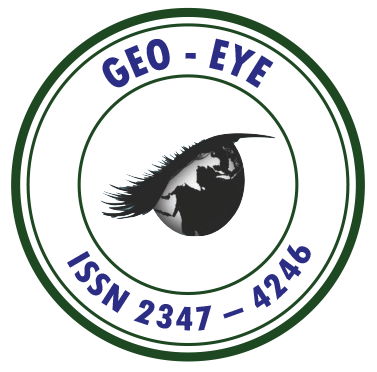
Geo-Eye
Department of Geography & GIS

Department of Geography & GIS

Geo-Eye
Year: 2019, Volume: 8, Issue: 2, Pages: 12-16
Original Article
N Chendrayudu1, C Prabhavathamma2
1HOD, Department of Geography, Sri Venkateswara University, Tirupati, Andra Pradesh, India
2Principal, APSWR School, G.D. Nellore, Andhra Pradesh, India
Received Date:02 July 2019, Accepted Date:22 October 2019
Geo-informatics is the science and the technology which develops and uses information science infrastructure to address the problems of geography, cartography, geosciences locations and related branches of science and engineering. It is a science and technology mainly includes Remote Sensing, Geographical Information System (GIS) and Geographical Position System (GPS). Remote Sensing provides data for even unreached areas where physical observations are impossible and GIS backs up to bring the data into visualization and support for ‘Decision Making”. Whereas GPS concentrate on suitable spot locational aspects. In the proposed article/ research paper, it is intended to present the role of Remote Sensing and GIS in unreached areas in the form of Extension fields. Rayalaseema Region of Andhra Pradesh is one of the notified drought prone areas of the nation. In fact the latest techniques have to be applied to unreached areas like Habitat analysis, School Locational analysis, Tribal inhabitation analysis, Precision agriculture, Water resources analysis etc. These tools can be widely used by extension field Professional. Citations have been taken from literature and recommendations.
© 2019 Chendrayudu & Prabhavathamma. This is an open-access article distributed under the terms of the Creative Commons Attribution License, which permits unrestricted use, distribution, and reproduction in any medium, provided the original author and source are credited.
Published By Bangalore University, Bengaluru, Karnataka
Subscribe now for latest articles and news.